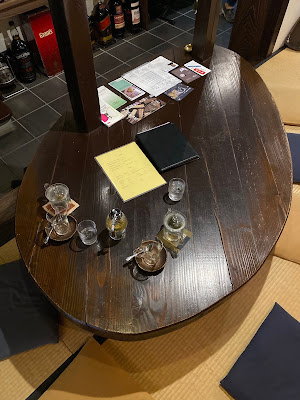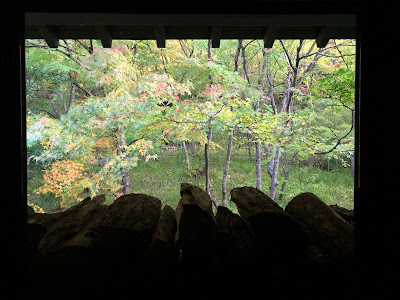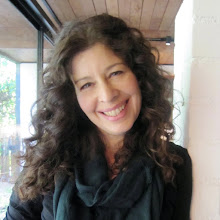KANAZAWA
Kanazawa is known as a beautiful city, well preserved having come through through WWII without damage. Kanazawa is north of Kyoto on the Sea of Japan. It's famous for Kenrokuen Garden, considered one of the three greatest gardens in Japan. In the 1600s crafts people and merchants were incentivized to come here to meet the needs of the Samurais who'd made their home here in service of the Maeda rulers. The focus on traditional crafts continues to this time.
Photos were taken by me, unless otherwise noted.
Photo: Kioku Keizo
Below: Diagonally across the street from the Eliason is the entrance to Kenrokuen Garden. I was expecting something more formal but should have known better. The garden is idealized nature, giving you the sense of being in a beautiful forest, around a lovely lake, where every branch and every pine needle is particularly balanced and framed by its setting. Pruning here is elevated to a high art, respected as much as almost any other artisan activity. Kenrokuen literally means "Garden of the Six Sublimities", referring to spaciousness, seclusion, artificiality, antiquity, abundant water, and broad views, the essential attributes that make up a perfect garden according to Chinese landscape theory.
Above and below: When I first saw these wonderful rope structures around the trees I assumed it was for a celebration. As it turns out every year on November 1st they begin the process of tying ropes to the branches of the prized trees, suspending them as a protection against heavy loads of snow.
Above and below: In addition to the suspension ropes there are posts to hold up the heavier branches. These seem to be a permanent feature.
Above: One of the more ancient trees with its complex set of supports and ropes.
Above: Here you can see the arborists attaching the ropes to the branches.
Above: "Gankobashi", or Flying Wild Geese Bridge.
Above: Moss carpets much of the garden under the trees.
Above: Gardeners wearing large straw hats painstakingly weed the moss.
Above: Gardening tools of straw and bamboo.
Above: Koi in a stream under a stone bridge.
Above: The Kotoji-toro Lantern is the symbol for the Kenrokuen Garden, and often used as the symbol for Kanazawa.
Below: After leaving the garden we headed over to the Higashi Chaya district, about a 20 minute walk.
Above: A bridge across the Asanogawa River. Higashi means east, and that's the way we were heading.
A chaya is a traditional place where geisha have been performing and entertaining since the late 18th century. There are still geisha performances here, as well as lots of tea shops, craft shops, and souvenir shops set up in the old chayas. This district is designated as one of Japan's cultural assets, and protected from development.
Above: This area is a favorite spot for photos...here, a bridal couple getting ready for the camera.
Above: Kimonos add to the historic character for photos.
Above and below: The chaya houses have latticework called "kimusuko" on the outside of the first floor.
Above: A bowl in the window of a wood craft store.
Above: View from the second floor of a tea house.
Above and below: Wood details
Above and below: Buvette, a pleasant French restaurant where we stopped for lunch. The meal had a comforting home cooked feeling.
Above: We discovered this guest house, Maki No Oto, one block east of the river...would have loved to stay here if we'd known about it. We did come back here for a fantastic dinner served in an elegant space looking out on a beautifully designed garden. The restaurant is "Higashiyama Wakon", and their food is described as Avant-garde Japanese cuisine.
Above: Around the same area we found this tea house/bar.
Above: The customers can sit at the bar on pillows, but behind the bar the floor is dropped for the bartender.
Above and below: This thick oval table has such great character.
Above: Walking to our hotel at night, we noticed a dinner party in an orange room glowing through a steamy window.
Above: Hitch Ark, a perfect place for breakfast...cinnamon toast with bananas! Breakfast in Japan is usually a savory meal, and I was happy to find something sweet.
Below: The D.T. Suzuki Museum, completed in 2011. D.T Suzuki (1870-1966) was a Buddhist philosopher. This is really more contemplation space than a traditional museum. The architect is Yoshio Taniguchi, also known for a 2004 addition and reworking of MOMA in NY.
Above: The contemplation room seems to float like an island in a pool.
Above: Inside the contemplation room.
Above and below: Fall color enlivens the view. Every three minutes a single hidden bubbler in the pool creates ripples that can focus a meditation.
Above: A lighting strip hidden at the base of the wall lights the hallway.
Above: This layout helps to understand how the spaces relate to each other.
Below: Behind the museum we found a path leading to a small garden with some old buildings. We opened a door to a ceramic studio and found this wonderful table and stool grouping with a central place to cook.
Above: On the steps outside the ceramic studio these flowers seemed to come from another time...like a magazine from the 70s.
Above: Great topiary on a street near the Sai River.
Above: The Nagamachi district was an area where Samurais lived with their families. The area's been preserved and there are residences that are open to the public. All the homes are behind earthen walls and there's more of a fortress like character than in other areas.
Above: The frosted windows revealed a used bookstore...as it turned out they had a great selection of art books.
Above: I found this book, on Nakagawa Kazumasa (1893-1991). I'd never heard of him, but liked the cover. When I looked inside his paintings were vibrant and full of life. I've learned that he was influenced by Van Gogh and Cezanne. He'd been a writer, but when he saw their work in a literary magazine "Shirakaba" it inspired him to start painting.
Above and below: Next door to the bookstore, another French lunch, this time at Hiramipan....very pretty surroundings and a delicious meal.
Above: A dynamic midcentury sculpture of a horse in a pool of water.
Above: On the east edge of Kanazawa Castle Park a series of sculptures lines a walking path. There's something joyful about this one of a mother and child...I don't know who the sculptor is.
Above: Interesting composition.
Above: A page of my husband's journal with images from Kanazawa. He was trying to learn to say you're welcome, and that's what the folded paper translates to.
Photo from Trip Advisor
Above: We had a great dinner at the Izakaya Itaru Honten. A menu with anything you can think of and a very convivial atmosphere, with Edith Piaf playing in the background.
THE NOTO PENINSULA
After three nights in Kanazawa we rented a car to drive up the Noto Peninsula to the town of Suzu where we were staying. We decided to brave driving on the opposite side of the road having had some experience in Cornwall last year, and knowing we'd be directed by GPS as we couldn't count on signs in english. The public transportation isn't as comprehensive in this area, and the freedom of a car seemed appealing.
Above: A good portion of the drive is along the ocean, making for great scenery.
Photo: kino1833
Above and below: Wajima Morning Market is a well known and popular spot to stop at. We got there a bit late (11:30) but I found some photos online to give the sense of the place.
Photo: oldbottle
Photo: まおれお
Photo: CZIMBA74
Photo: Yoshisada I
Photo: Yoshisada
Photo by Stephen Mansfield, Japan Times
Above: East of Wajima rice terraces at Shiroyone Senmaida near the village of Sosogi.
Photo by Masahiro Hashimoto
Above: Further northeast along the coast are these lava rocks. I didn't stop to get a photo as I thought we'd see more but they proved to be a unique sight in that one spot.
Above and below: We arrived a bit early at Yuyado Sakamoto, but were welcomed into the guest house (below). A warm room with a beautiful view.
Above: Their web site is a warning to anyone who wants activities to stay away. But we thought it sounded appealing all the same.
Above: A drip fountain in the entry of the main house.
Above: The view from the corridor over the logs outside to the trees.
Above: Sitting close to the coals for extra warmth to read by. This room is where we gathered, had our dinner with the other guests.
Above and below: At the end of the hall is this open air space where we washed our hands and brushed our teeth.
Above: Found on a local beach, a short walk from the inn.
Above: The bath, (covered), looking out on a bamboo forest.
Above: The low table where we joined the other guests for dinner and breakfast the next morning.
Photo: Inomata Hiroshi
Above: A typical breakfast at the Sakamoto.
Above: Telephone in the hallway.
Above: My husband's sketchbook shows the walk behind the inn, and the sink from above.
Photo: Inomata Hiroshi
Above: Innkeepers Sakamoto Shin’ichiro (right) and Sakamoto Mihoko.
Above: A path behind the inn.
Above and below: Fall color. Surprising to see tires fencing an old shrine.
Above and below: The woods behind the inn.
Above: This mysterious pod looks as though it's sitting in a nest waiting to hatch.
Above and below: At the Suzu Museum incised pots from the second half of the 13th century. Suzu Ware was inspired by Korean pottery.
Above: Images from Suzu.
Above: The icon for the Noto Peninsula is this rock, known as Mitsukejima Island, at the end of a jetty.
Below: Mitsukejima Island has its own cartoon character.










































































































